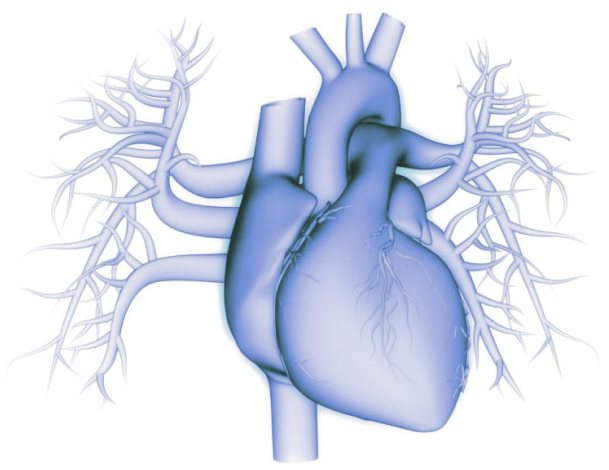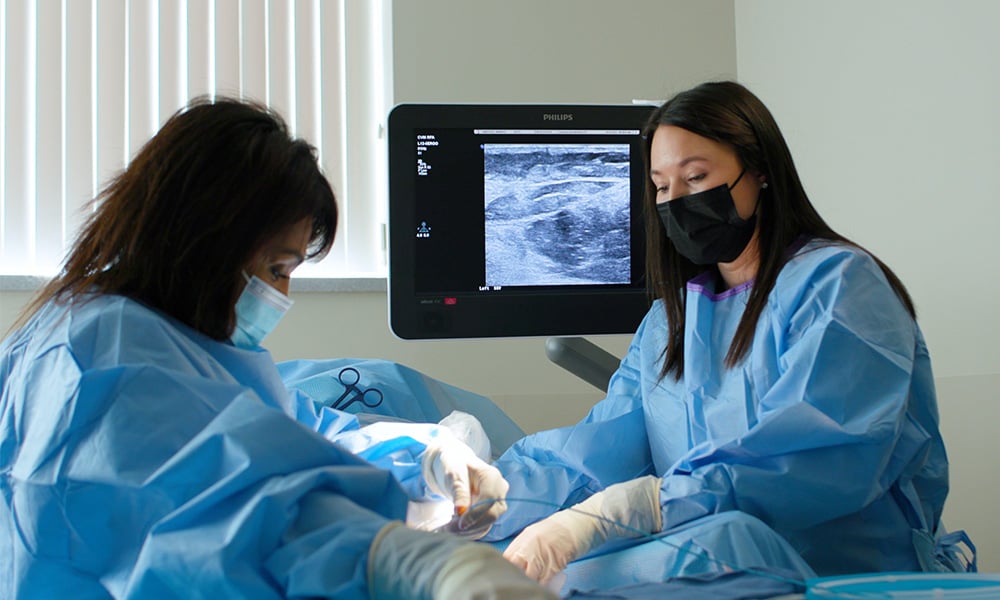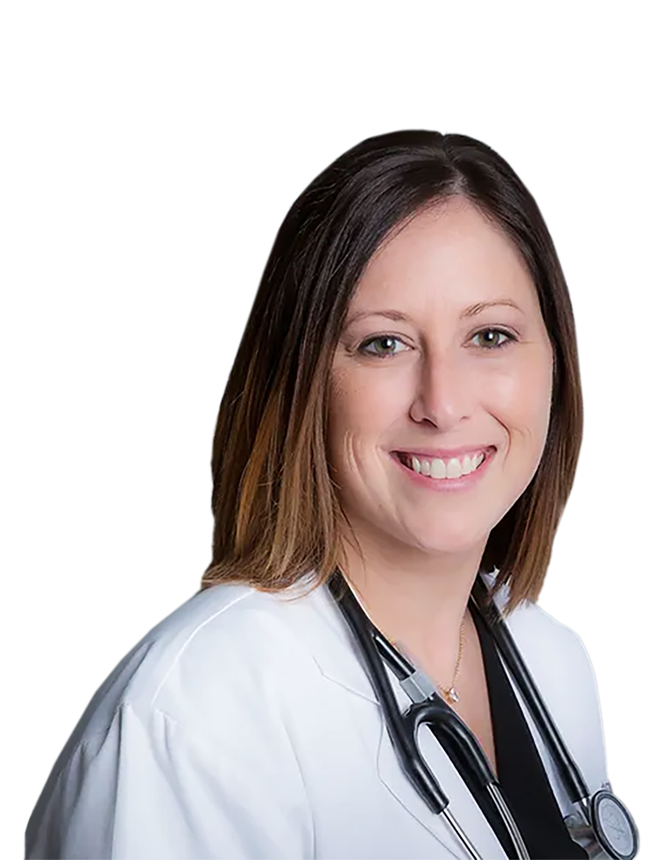Conditions & Symptoms
Clinical Cardiology

Cardiac Imaging and Diagnostics
Electrophysiology
Invasive & Interventional Cardiology
Vein & Vascular Care
Procedural Lab
(In-Office)
Preventive Services
CVM Locations
Chronic Leg Vein Conditions
Understanding Chronic Leg Vein Disease
When valve malfunction prevents proper blood flow, the blood must go someplace. Rather than circulate throughout the body, the blood in damaged veins can start to flow backward, collecting or pooling in the legs. This pooling of blood increases pressure in the legs, causing a variety of symptoms that can range from mild to severe, including:
- Achiness
- Heaviness
- Burning or tingling
- Cramping
- Discolored skin
- Swelling
- Flaking or itching skin
- Leg ulcers
- Varicose veins

Diagnosing Leg Vein Disease
If you are experiencing any of the above symptoms, schedule an appointment with a vein disease specialist. Diagnosing leg vein disease is relatively straightforward. Your doctor will collect a full medical history before examining your legs for signs and asking about your symptoms. Varicose veins (twisted, enlarged veins that are visible near the surface of the skin), swelling, skin changes, or the presence of ulcers are classic signs that will alert your doctor to a possible leg vein disease diagnosis.
It is not uncommon for leg vein disorders to be misdiagnosed. For this reason, your doctor may also recommend additional testing to validate their assumption and pinpoint the exact location of the damage or dysfunction. Ultrasound will allow your doctor to evaluate your vein valve function and determine whether the problem affects superficial or deep veins.
Treating Leg Vein Disease
Treatment may begin with lifestyle changes and additional non-surgical treatments, such as compression therapy or medication. For more advanced cases, we perform minimally-invasive procedures to restore blood flow without open surgery. These procedures are designed to close down the affected vein and reroute blood flow to healthier veins.
- Radiofrequency Ablation: an outpatient procedure that places a tiny, specialized catheter inside the affected vein and uses heat to seal the vein from the inside.
- Non-Thermal Adhesive Ablation or Sclerotherapy: an outpatient procedure that injects a chemical, foam, or glue-like substance into the vein, causing it to close in on itself.
- Endovenous Laser Treatment (EVLT): an outpatient procedure that uses laser light emitted through a thin fiber inserted in the skin to target and close the vein.
- Stab Phlebectomy: a more involved outpatient procedure that removes protruding veins in sections through tiny incisions (and may be performed in conjunction with radiofrequency ablation or endovenous laser treatment).
More on Leg Vein Conditions
Defining "Chronic" Leg Vein Conditions
If your symptoms are more severe, your leg vein disease may be characterized as “chronic”. Chronic leg vein disease can be congenital or can develop later in life. Deep vein thrombosis (DVT), a blood clot that forms in the deep veins of the body, is the most common cause of chronic vein disease. Other factors that can cause pressure to build up in the legs include:
- Damage to the vein, even after the clot dissolves
- Leg injury or surgery
- Obesity or weight gain, including weight gain associated with pregnancy
- Standing or sitting for extended periods of time without walking
Lifestyle Changes for Leg Vein Disease
Lifestyle changes can improve leg vein disease symptoms. The most common lifestyle changes recommended by our physicians include:
- Low-impact exercises like walking and bike-riding
- Elevating your legs above your heart
- Weight management to decrease pressure in the veins
- Strengthening the leg muscles
- Avoiding prolonged periods of sitting or standing
Meet Your Illinois and Iowa
Cardiovascular Physicians
In Search of Care? Request a Consultation Today



